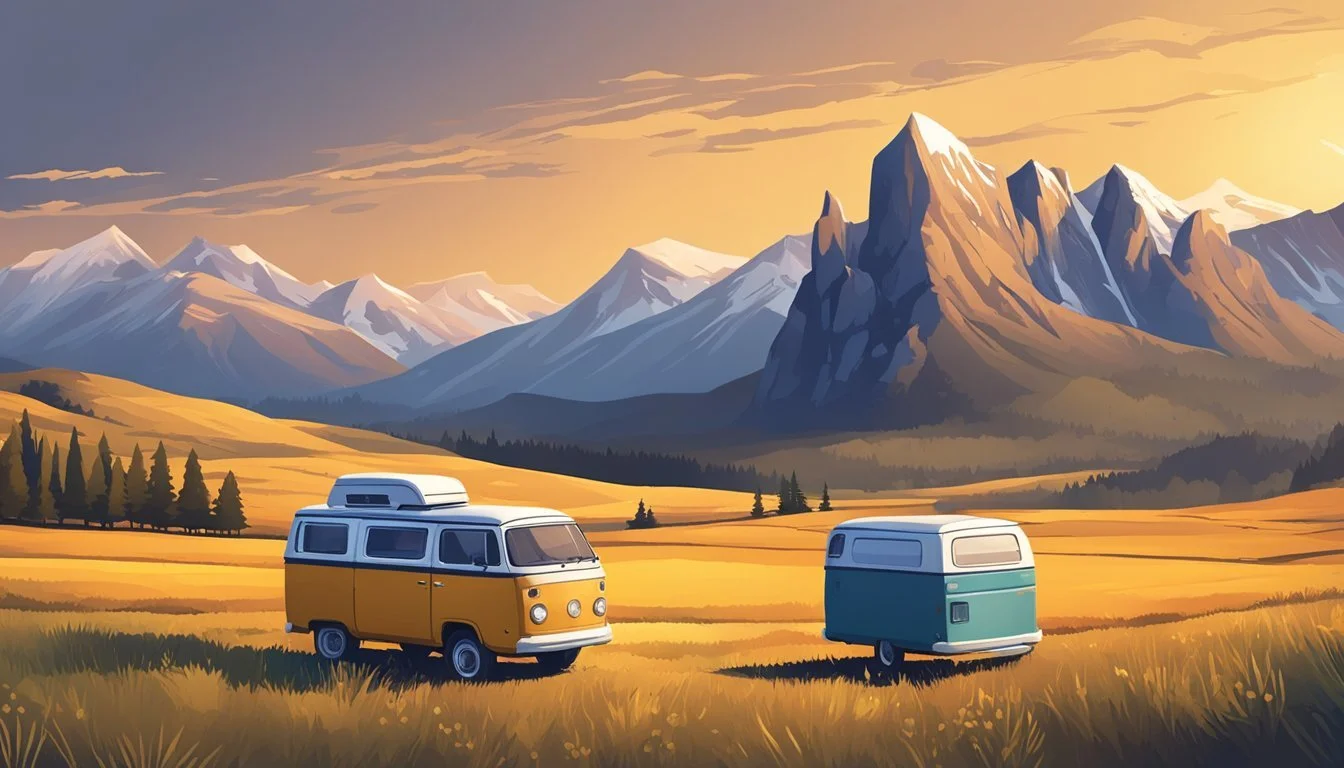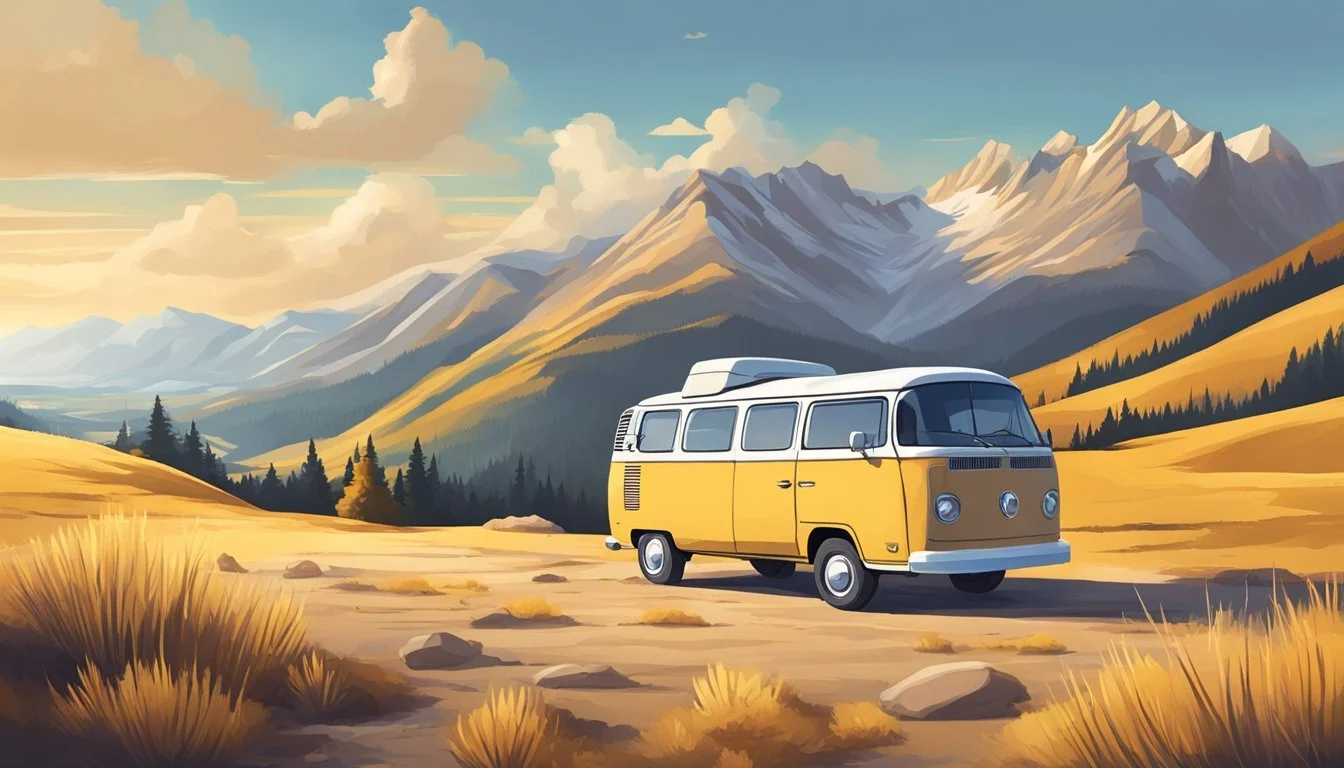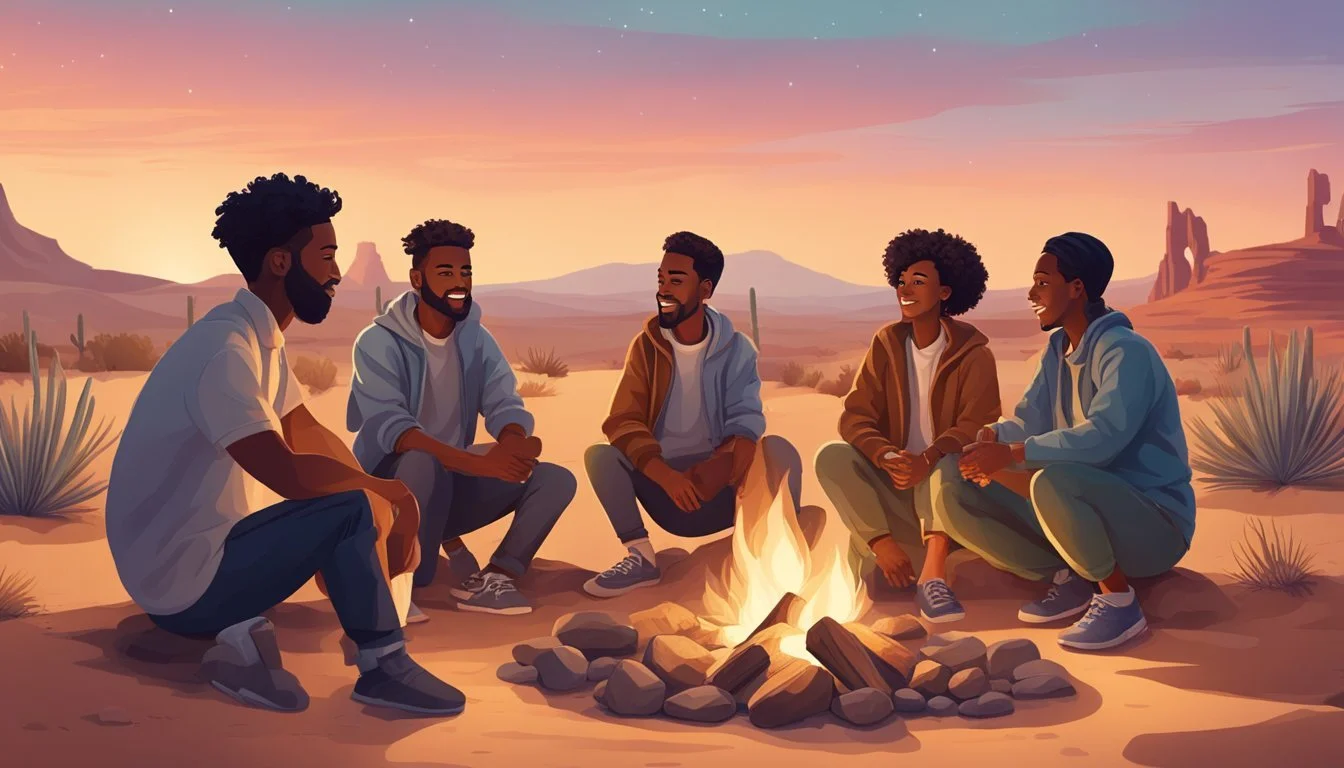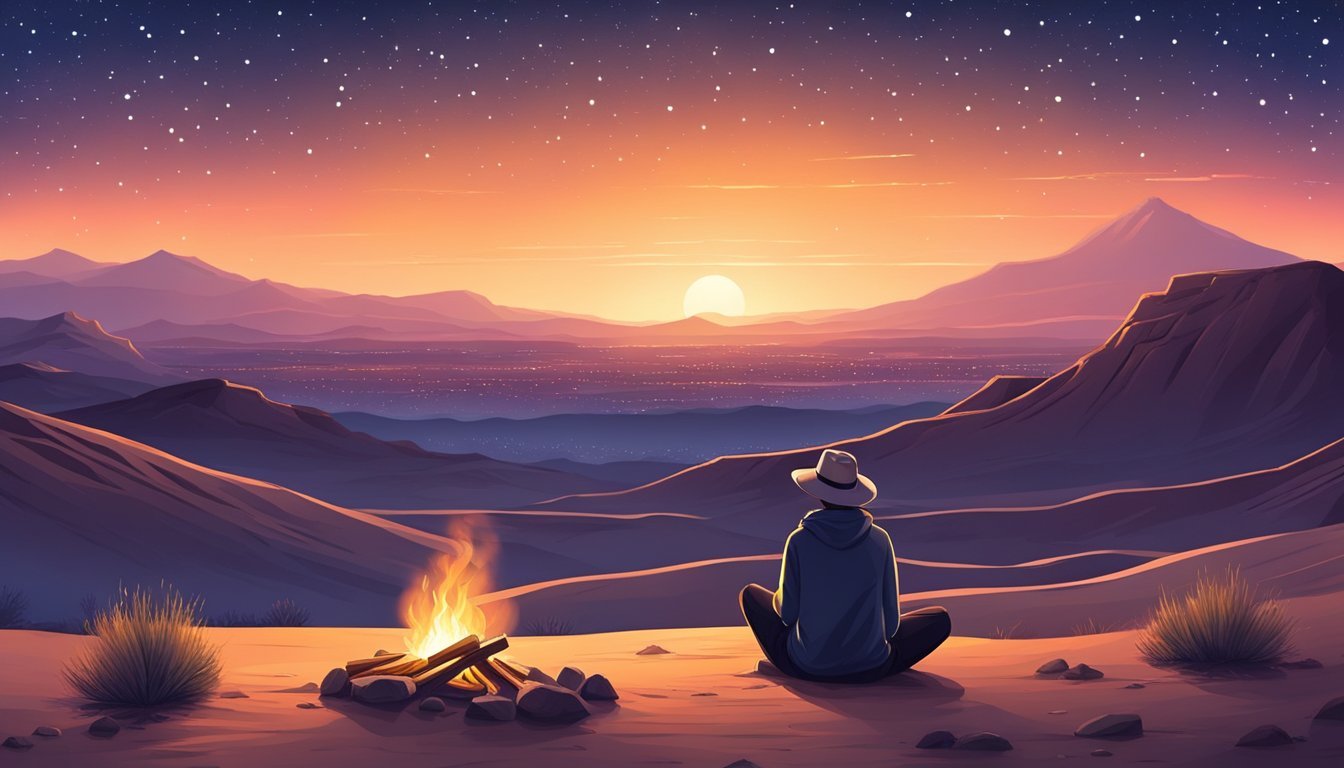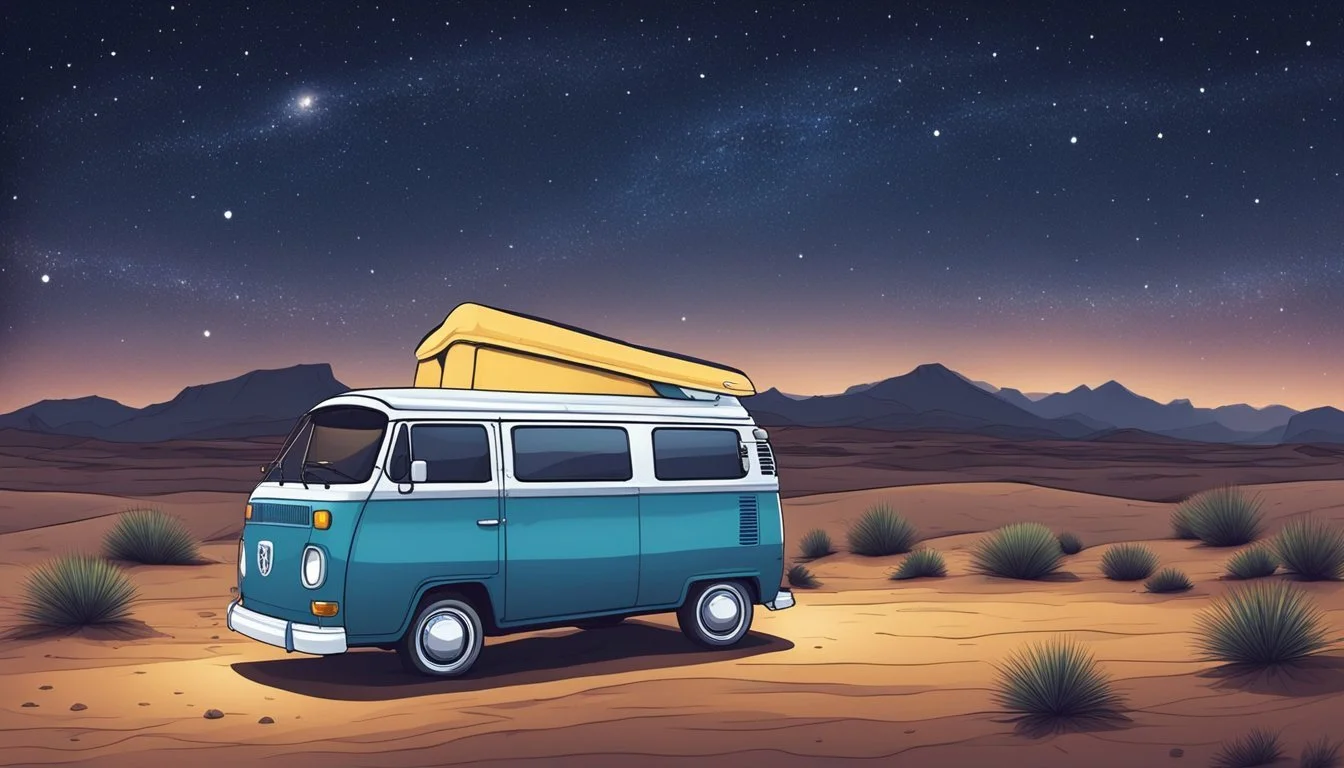Golden Dreams: The Real-Life Journey Behind 'Nomadland'
Exploring America's Modern Nomads
'Nomadland' captivated audiences with its poignant portrayal of modern-day nomads traversing America's heartland. The film, directed by Chloé Zhao and starring Frances McDormand, blends fiction with reality, drawing inspiration from real-life nomads and their experiences.
The movie's authenticity stems from its incorporation of actual nomads, including Linda May, Swankie, and Bob Wells, who play versions of themselves alongside professional actors. These individuals, featured in Jessica Bruder's non-fiction book that inspired the film, bring genuine depth to the narrative with their lived experiences of life on the road.
Nomadland sheds light on a subculture of older Americans who have embraced a nomadic lifestyle, often out of economic necessity following the 2008 financial crisis. The film's success, including multiple Oscar wins, has brought increased attention to the challenges and freedoms of this unconventional way of life, sparking conversations about economic inequality and the changing nature of the American Dream.
The Essence of 'Nomadland'
'Nomadland' portrays the lives of modern-day nomads in America. The film, directed by Chloé Zhao, stars Frances McDormand as Fern, a widow who embarks on a journey through the American West.
Based on Jessica Bruder's non-fiction book, the movie blends fact and fiction. It features real-life nomads alongside professional actors, creating an authentic depiction of this lifestyle.
The story explores themes of economic hardship, resilience, and the search for meaning. Fern's experiences reveal the challenges faced by older Americans struggling to make ends meet in a changing economy.
Zhao's direction captures the stark beauty of the American landscape. Her naturalistic approach lends the film a documentary-like quality, enhancing its realism.
McDormand's nuanced performance as Fern anchors the narrative. She portrays a complex character navigating loss, independence, and new connections with fellow travelers.
'Nomadland' received critical acclaim and multiple awards. It won three Academy Awards in 2021:
Best Picture
Best Director (Chloé Zhao)
Best Actress (Frances McDormand)
The film's success brought attention to the real-life nomadic community it depicts. It shed light on the experiences of those who choose or are forced into a transient lifestyle in modern America.
Story and Adaptation
"Nomadland" blends real-life experiences with fictional elements, creating a powerful narrative about modern American nomads. The film's roots lie in a nonfiction book, while its central character embodies the struggles and resilience of those living on the road.
Jessica Bruder's Nonfiction Book
Jessica Bruder's 2017 book "Nomadland: Surviving America in the Twenty-First Century" serves as the foundation for the film. Bruder spent three years immersing herself in the world of older Americans who adopted nomadic lifestyles after the 2008 financial crisis.
The book profiles several real-life nomads, including Linda May, a 64-year-old grandmother living in a Jeep. Bruder's work highlights the economic challenges faced by these individuals and their search for community and purpose on the road.
Fern's Fictional Journey
The film adaptation introduces Fern, a fictional character played by Frances McDormand. Fern embodies the experiences of many real nomads Bruder encountered.
After losing her job and home, Fern embraces van life. Her journey reflects the realities of seasonal work, RV communities, and the challenges of life on the road. The film blends Fern's story with appearances by real nomads, creating a unique docufiction approach.
Fern's character allows viewers to connect emotionally with the nomadic experience. Her interactions with fellow travelers and her personal growth form the heart of the narrative.
Themes and Motifs
"Nomadland" explores profound themes of personal freedom, grief, and the evolving American Dream. The film weaves these concepts into a tapestry of human experience, challenging traditional notions of success and happiness.
The Search for Freedom
Fern's journey embodies a quest for independence and autonomy. She rejects conventional living, embracing a nomadic lifestyle that allows her to roam freely. This freedom comes with trade-offs, as Fern faces uncertainty and occasional hardship.
The open road symbolizes possibility and escape. Vast landscapes serve as a backdrop for personal transformation. Fern's van becomes more than transportation - it's a mobile home representing her newfound liberty.
Natural settings play a crucial role. Desert expanses and forested campgrounds offer a sense of liberation from societal constraints. These environments contrast sharply with the structured, confined spaces of traditional housing and workplaces.
Grief and Healing
Loss permeates "Nomadland," particularly through Fern's experience of widowhood. Her nomadic lifestyle serves as both an escape from and a means of processing her grief.
The film portrays grief as a journey rather than a destination. Fern's interactions with fellow travelers reveal shared experiences of loss and resilience. These connections offer moments of solace and understanding.
Nature acts as a healing force. Scenic vistas and solitary moments in the wilderness provide opportunities for reflection and emotional processing. The cyclical patterns of seasons mirror the ebb and flow of grief.
American Dream Reimagined
"Nomadland" challenges traditional notions of the American Dream. It presents an alternative vision where success is measured by experiences and personal growth rather than material possessions.
The film highlights economic struggles faced by many Americans, especially in the aftermath of the 2008 financial crisis. It showcases how some individuals have adapted by embracing minimalism and unconventional lifestyles.
Community takes on new meaning in this reimagined dream. Nomads form bonds through shared experiences and mutual support, creating chosen families. These connections often prove more meaningful than traditional societal structures.
Authenticity emerges as a core value. Characters in the film prioritize genuine experiences and relationships over societal expectations or material wealth. This shift represents a redefinition of what it means to live a fulfilling life in modern America.
Casting Real-Life Nomads
Chloé Zhao's unique approach to casting "Nomadland" involved incorporating actual nomads into the film. This decision brought authenticity and depth to the storytelling, allowing real experiences to shine through alongside the fictional elements.
Swankie's Life-May-Turn
Charlene Swankie, a 61-year-old widow, found herself unexpectedly cast in "Nomadland." Her powerful performance stemmed from her genuine nomadic lifestyle and personal struggles. Swankie's character in the film faces a terminal brain cancer diagnosis, mirroring her real-life health concerns.
The casting process gave Swankie a platform to share her experiences. Her scenes with Frances McDormand showcased the raw emotions and challenges of nomadic life. Swankie's authenticity resonated with audiences, bringing a touching realism to the film.
Linda May's and Bob Wells' Contributions
Linda May and Bob Wells, two other real-life nomads, played significant roles in "Nomadland." Linda May, a grandmother in her 60s, brought her genuine warmth and resilience to the screen. Her character's journey reflected her actual experiences of embracing van life after facing financial hardships.
Bob Wells, a well-known figure in the nomadic community, portrayed himself in the film. His scenes offered valuable insights into the nomadic lifestyle and philosophy. Wells' presence added credibility to the narrative, providing a bridge between the fictional story and real-world nomadic experiences.
The Filmmaking Journey
Chloé Zhao's unique approach and innovative cinematography techniques shaped Nomadland's authentic portrayal of nomadic life in America. The film's production blended documentary-style realism with carefully crafted storytelling.
Chloé Zhao's Direction
Zhao's directing style focused on capturing genuine moments and emotions. She cast real-life nomads alongside professional actors, creating a seamless blend of fact and fiction.
Her previous film "The Rider" demonstrated her talent for working with non-actors. This experience proved invaluable in Nomadland.
Zhao spent time living among van-dwelling communities to understand their experiences. This immersive approach informed her sensitive and nuanced direction.
She encouraged improvisation and allowed scenes to unfold naturally. This resulted in authentic performances that resonated with audiences and critics alike.
Cinematography and Production
Nomadland's visual style emphasized natural light and wide-open landscapes. Cinematographer Joshua James Richards used handheld cameras to create an intimate, documentary feel.
The production team traveled to multiple states, capturing the diverse environments nomads inhabit. Key locations included:
Arizona
California
Nevada
South Dakota
Filming often took place in real nomad campsites and gatherings. This added layers of authenticity to the movie's visuals.
The cinematography highlighted both the beauty and harshness of life on the road. Long takes and expansive shots conveyed the sense of freedom and isolation experienced by nomads.
Nomadic Lifestyle Explored
The modern nomadic lifestyle embraces freedom, minimalism, and unconventional living. It attracts individuals seeking alternatives to traditional housing and work arrangements.
The Rise of #VanLife
#VanLife has gained popularity as a subset of nomadic living. This movement sees people converting vans into mobile homes, enabling travel while maintaining a sense of home. Social media platforms showcase picturesque images of van interiors and stunning landscapes.
Many nomads document their journeys online, inspiring others to join the lifestyle. CheapRVliving, a popular resource, offers tips on affordable mobile living. The annual Rubber Tramp Rendezvous gathering brings together van dwellers and other nomads to share experiences and knowledge.
Challenges and Fulfillment
Nomadic living presents unique challenges. Finding consistent income, dealing with vehicle maintenance, and locating safe parking spots are common concerns. Nomads must also navigate limited living space and occasional loneliness.
Despite these hurdles, many find the lifestyle deeply fulfilling. It offers opportunities for personal growth, cultural experiences, and connection with nature. Modern nomads often report feeling more present and appreciative of simple pleasures.
Some embrace this way of life temporarily, while others commit long-term. The flexibility allows individuals to tailor their nomadic experience to their specific needs and desires.
Cultural and Social Impact
'Nomadland' sheds light on economic hardship and shifting lifestyles in America. The film captures the aftermath of the Great Recession and highlights the experiences of older Americans facing financial insecurity.
Reflections on the Great Recession
The 2008 financial crisis left deep scars on the American economy. 'Nomadland' portrays the lasting effects on individuals and communities. Many lost jobs, homes, and savings during this tumultuous period.
The film showcases how some Americans adapted by embracing a nomadic lifestyle. They traded traditional homes for vans and RVs, seeking work wherever they could find it.
This cultural shift reflects broader changes in the workforce and housing market. The movie depicts a generation grappling with economic uncertainty and redefining the American Dream.
Insights on Older Americans
'Nomadland' offers a unique perspective on the challenges faced by older Americans. The film focuses on individuals in their 60s and 70s who find themselves without financial security.
Many of these "houseless" nomads work seasonal jobs to make ends meet. They take on roles in Amazon warehouses, campgrounds, and other temporary positions.
The movie highlights the resilience and adaptability of this often-overlooked demographic. It challenges stereotypes about aging and retirement in modern America.
'Nomadland' also raises questions about social safety nets and support systems for older citizens. The characters' struggles underscore gaps in healthcare, housing, and employment for seniors.
Locations and Settings
Nomadland's journey traverses the vast expanses of the American West, showcasing its diverse landscapes and hidden communities. The film highlights key locations that serve as both backdrops and characters in Fern's nomadic adventure.
Crossing the American West
Fern's odyssey begins in Empire, Nevada, a real town devastated by the closure of its U.S. Gypsum plant. This sets her on a path across the rugged terrain of the American West. The film captures the stark beauty of Nevada's desert expanses, with endless highways cutting through barren landscapes.
California's varied geography features prominently, from its sun-baked deserts to lush redwood forests. Arizona's iconic red rock formations and vast canyons provide a stunning backdrop for parts of Fern's journey.
Significant Stops Along the Way
Quartzsite, Arizona emerges as a crucial waypoint in Nomadland. This small desert town transforms into a bustling gathering place for nomads during winter months. Here, Fern finds community and learns valuable survival skills from fellow travelers.
The film also explores lesser-known locations that offer seasonal work opportunities. These include Amazon fulfillment centers, national parks, and remote campgrounds. Each stop presents unique challenges and experiences for Fern.
Badlands National Park in South Dakota serves as another memorable setting, its otherworldly rock formations contrasting with the human stories unfolding within its borders.
Distribution and Reception
"Nomadland" reached audiences through streaming and garnered significant critical acclaim. The film's release strategy and subsequent accolades cemented its place in cinematic history.
Streaming on Hulu
"Nomadland" debuted on Hulu on February 19, 2021. This digital release allowed the film to reach a wide audience during the COVID-19 pandemic. Hulu's platform provided easy access for viewers to experience Fern's emotional journey across the American West.
The streaming release coincided with a limited theatrical run. This dual approach balanced traditional cinema experiences with modern viewing habits. Hulu reported strong viewership numbers, though exact figures were not disclosed.
Awards and Recognition
"Nomadland" received numerous accolades, including three Academy Awards. The film won Best Picture, Best Director for Chloé Zhao, and Best Actress for Frances McDormand. It also secured four Golden Globe nominations, winning Best Motion Picture - Drama and Best Director.
Critics praised the film's authentic portrayal of nomadic life. Many highlighted the emotional depth of McDormand's performance. The American Film Institute named "Nomadland" one of the top ten films of 2020.
The film's success at award ceremonies boosted its visibility. This recognition led to increased viewership on Hulu and expanded theatrical showings.
Beyond the Film
'Nomadland' sparked broader conversations about nomadic living and economic challenges faced by older Americans. The film's impact extended far beyond the silver screen, influencing real-world communities and ongoing discussions about alternative lifestyles.
Communities and Advocacy
The release of 'Nomadland' brought increased attention to organizations supporting nomadic lifestyles. Home on Wheels Alliance, founded by Bob Wells, gained prominence for its work assisting nomads with practical needs and community building. Online forums and social media groups flourished, connecting nomads across the country.
These communities provided vital support networks, sharing resources on safe camping spots, vehicle maintenance, and navigating bureaucratic challenges. Advocacy efforts intensified, pushing for more equitable treatment of nomads in areas like healthcare access and voting rights.
The Ongoing Story of Nomadism
The nomadic lifestyle continues to evolve in response to economic pressures and societal shifts. Covid-19 accelerated interest in mobile living for some, seeking escape from urban centers. Climate change has also influenced nomadic patterns, with some travelers adjusting routes to avoid wildfires or extreme weather events.
Younger generations are increasingly exploring nomadism, often blending remote work with travel. This demographic shift is reshaping the nomadic community, introducing new technologies and perspectives. Challenges persist, including rising fuel costs and limited access to affordable healthcare. The nomadic story remains dynamic, reflecting broader societal changes and individual quests for freedom and meaning.
Real-life Portrayals
Nomadland blends fiction with reality by featuring actual nomads alongside professional actors. This unique approach lends authenticity to the film's depiction of van-dwelling life and the challenges faced by those living on the road.
Swankie and Charlene Swankie
Swankie, a real-life nomad, plays a version of herself in the film. Her character shares her own experiences and philosophy about living on the road. Charlene Swankie, the person behind the role, has been a van dweller for over a decade.
In the movie, Swankie forms a friendship with Fern, the protagonist played by Frances McDormand. Their interactions provide insight into the nomadic lifestyle and the reasons people choose this path.
Swankie's powerful monologue about her terminal illness and desire to see beautiful places before she dies resonates deeply with viewers. This scene exemplifies how the film incorporates real nomads' stories to create emotional depth.
The Presence of Amazon
Amazon plays a significant role in Nomadland, reflecting its real-world impact on nomadic workers. The film depicts the company's Camperforce program, which hires seasonal workers, many of whom are nomads.
Fern works at an Amazon warehouse during the holiday rush. This portrayal highlights the economic realities faced by many nomads who rely on temporary jobs to sustain their lifestyle.
The film shows both positive and negative aspects of Amazon's involvement. It provides crucial employment opportunities for nomads but also underscores the precarious nature of their financial situation.



